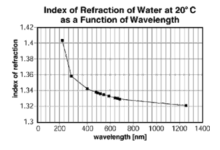How To Use Mental Mathematics to Solve ACT Mathematics Problems Quickly

How To Use Mental Mathematics to Solve ACT Mathematics Problems Quickly especially when you have lost track of the usual formula that you usually know. Mental mathematics is a very good and powerful tool that many students need to know especially those who offer ACT Mathematics.
It helps to perform a whole lot of calculations mentally without thinking too much or using a calculator. This will save you valuable time and help you answer more questions correctly. One way to gain a competitive edge is to master the art of mental mathematics.
Another crucial aspect of mental mathematics is memorizing key math facts like multiplication tables, squares, and cubes. This will help students to quickly recall important information and solve problems mentally.
Calculators and the ACT Mathematics Test
Remember, you can solve every question on the ACT math test without a calculator. But, even so, you are allowed to use one. If you choose to use a calculator, use it wisely. Many questions are answered more quickly and easily without a calculator. That is why students should be conversant and familiar with the rubrics of mental mathematics to be able to perform some simple calculations without the need for a calculator to save time.
Make sure you use a permitted four-function, scientific, or graphing calculator. You should also make sure you are comfortable with the calculator you select. Don’t try out a new model on the day of the test!
Strategies For ACT Mathematics Test Problems
There are many approaches to solving math problems. When it comes to a standardized test like the ACT, however, sometimes there may be one approach that is particularly useful—or even a way to avoid having to solve the problem altogether. Let’s look at some strategies that are specific to math questions on this test.
Do not always jump to your calculator. Although the ACT allows calculator use, even the guides published by the makers of the test mention that using one won’t always be the best approach.
For example, when you have a question on fractions, one approach here could be to plug all of this into your calculator and see what answer comes up. Depending on your knowledge of basic fractions, you might also have to convert each answer to a decimal to verify.
However, before you even have a chance to type this into your calculator, someone with the knowledge of the exponent rules would already be finished. How? Well, as we will see later when terms like this are multiplied, you just add exponents.
For example: What is the largest real zero of the polynomial f(x) = x(x + 5)(x − 3)(x2 + 4)? (a) 0 (b) 2 (c) 3 (d) 4
(e) 5
If you knew the zero product rule, this question would be easy. But let’s say you forgot it but did remember that a zero of a polynomial is a value for which the polynomial equals zero. You could then test each answer, see if it yields zero, and then pick the largest one.

Since you are looking for the largest, you should start with the largest number first. Then, as soon as you find a zero, you know you have found the largest.
Answer choice E: 5(5 + 5)(5 − 3)(52 + 4) ≠ 0, not a zero
Answer choice D: 4(4 + 5)(4 − 3)(42 + 4) ≠ 0, not a zero
Answer choice C: 3(3 + 5)(3 − 3)(32 + 4) = 0
This is the correct answer because it is a zero of the polynomial. Since all the other answer choices we didn’t check are smaller, it must be the largest.
Do well to always eliminate answer choices whenever possible. There is no penalty for guessing on the ACT. Therefore, if you aren’t sure, you should eliminate any answer choice you can and then guess. Here is an example to see how you might approach eliminating choices.
Example: What is the prime factorization of 32? (a) 2^4 (b) 2^5 (c) 2^3 × 22 (d) 8 × 22
Let’s say you aren’t sure what prime factorization means. Checking each answer choice, only 1, choice A doesn’t equal 32. This seems unusual, so you probably should eliminate it.
At this stage, you have increased your chances of guessing right from 1 out of 5 (20%) to 1 out of 4 (25%). Not bad! Depending on how much you remember about primes and factorization, you might now notice that answer choices C and D all include non-primes. Using this, you might guess answer choice B, and you would be correct.
There are many strategies for dealing with math problems on the ACT—the best will always be to know the math! But, of course, you may not remember everything on test day. A thorough review (like you are doing with this course) and learning strong test-taking skills will take you a long way.
How To Use Mental Mathematics to Solve ACT Mathematics Problems Quickly
- Practice mental calculation skills: Develop your ability to perform basic arithmetic operations like addition, subtraction, multiplication, and division mentally.
- Memorize key math facts: Commit to memory key math facts like multiplication tables, squares, and cubes.
- Use visualization techniques: Visualize numbers and math operations to help you solve problems mentally.
- Break down problems: Break down complex problems into simpler ones and solve them mentally.
- Practice with mental math exercises: Regularly practice mental math exercises to improve your skills.
- Use estimation techniques: Use estimation techniques to quickly approximate answers.
- Stay focused and calm: Stay focused and calm during the test to help you think clearly and perform mental calculations accurately.
Reviewing and sharpening your number sense is very important that is why many students are advised to know how to use mental mathematics to solve ACT mathematics problems quickly because the ACT itself is an advanced test.
This is one of the reasons why the regular old ‘number sense’ is still an important skill for directly solving all of the mathematics you will see on the exam and for understanding the methods used in advanced ACT mathematics questions.
The best way for students to know how to use mental mathematics to solve ACT mathematics problems quickly is to get comfortable with imaginary or complex numbers. When you solve advanced maths problems, you may also encounter imaginary or complex numbers in your solutions. You must be able to interpret and manipulate these expressions, just like you have learned with real numbers.








